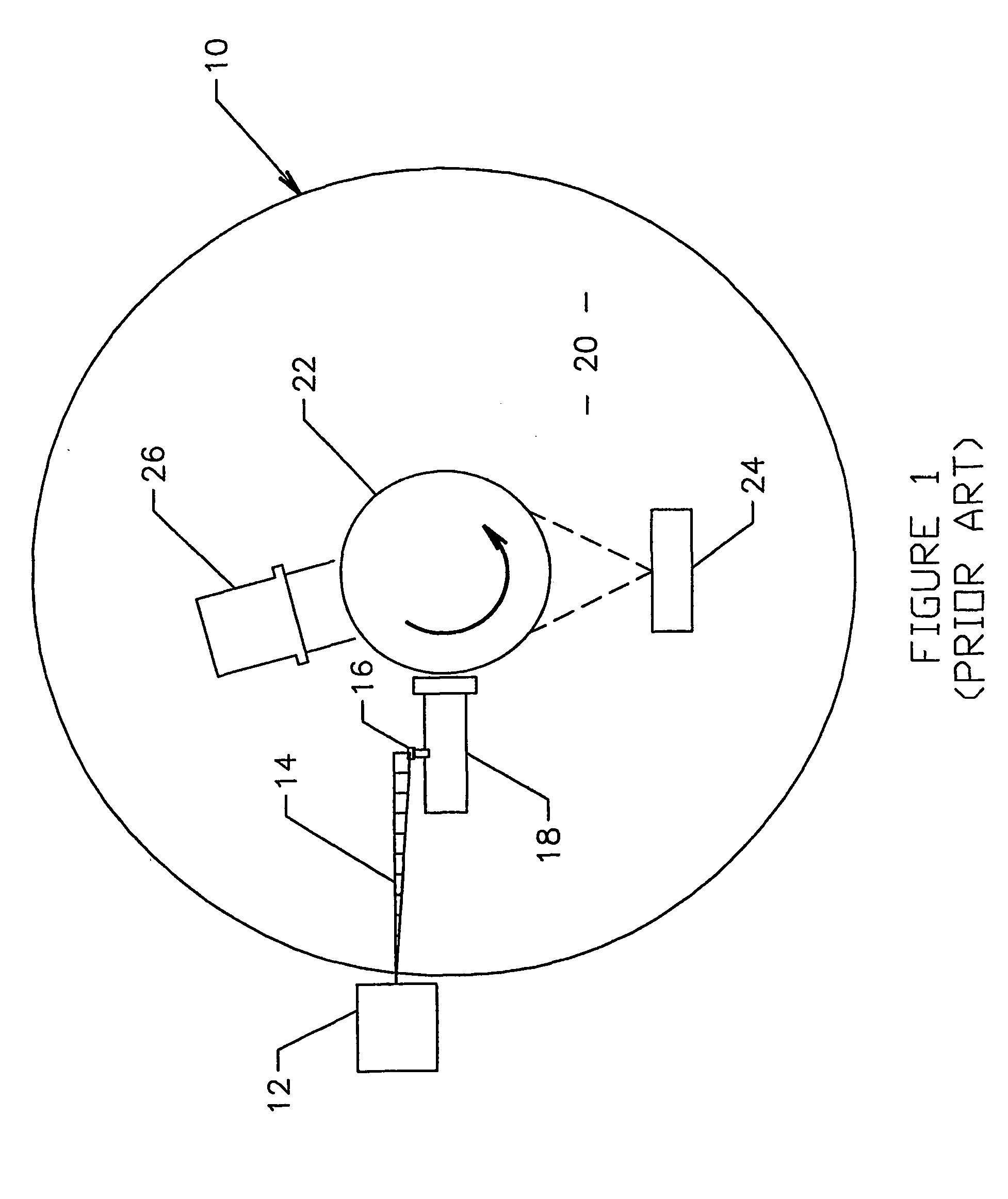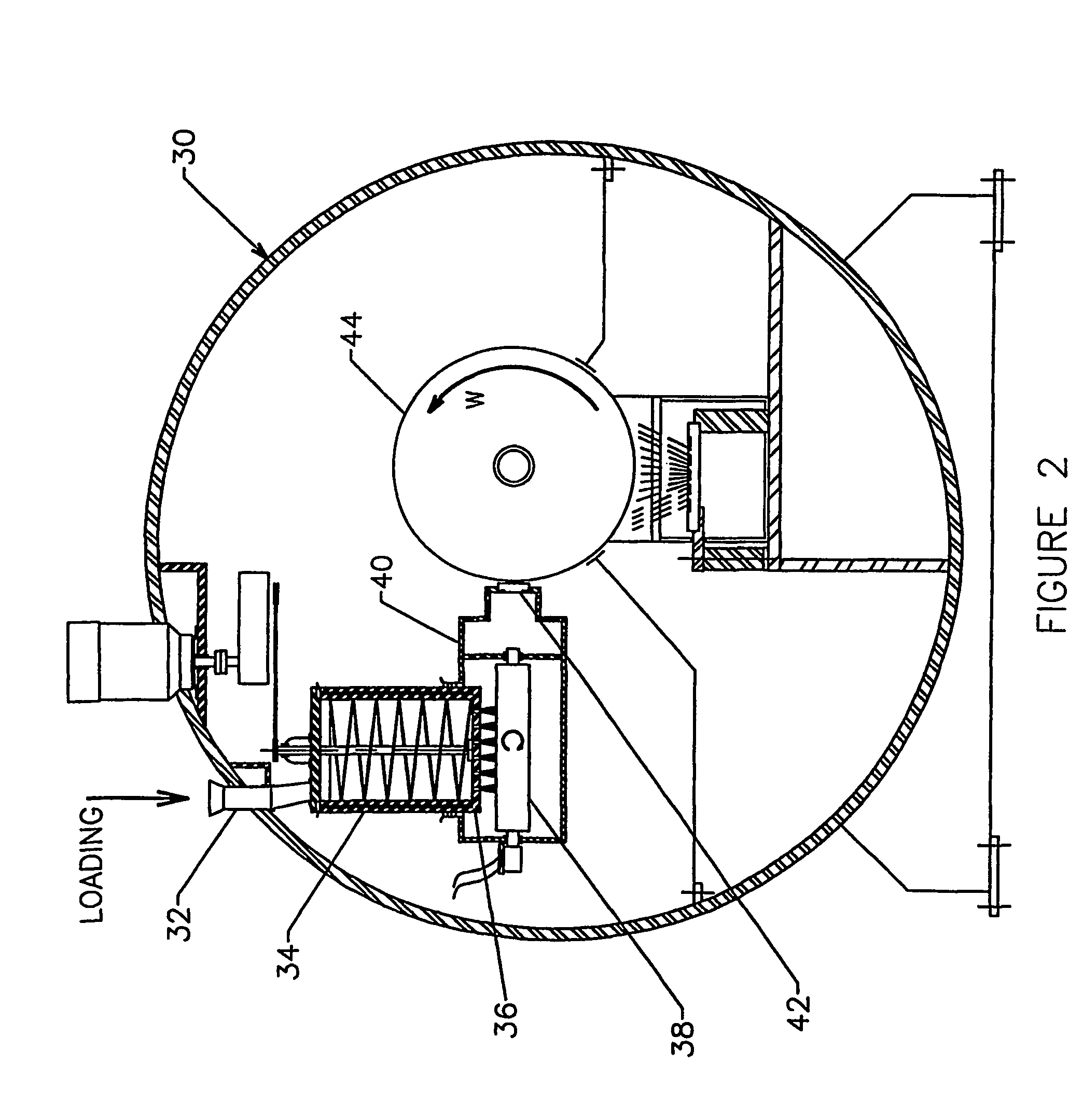Vapor deposition of solid oligomers
a technology of solid oligomers and vapor deposition, which is applied in the direction of dough shaping, manufacturing tools, applications, etc., can solve the problems of not being able to vaporize the final polymer product, requiring relatively long residence times and undesirable steps, and requiring a limited amount of conductivity of packaging materials for electronic products
- Summary
- Abstract
- Description
- Claims
- Application Information
AI Technical Summary
Benefits of technology
Problems solved by technology
Method used
Image
Examples
example 1
[0043]This example illustrates the manufacture of a solvent-free, flash evaporated and vacuum deposited thermoplastic (soluble and fusible) release coating. The object is the preparation of a release coating usable for the manufacture of metal flakes utilized in pigment production. According to the prior art, the metal flakes are produced by depositing a metal film over a polymeric substrate coated with a polymeric film, and then by separating the metal film from the substrate and crushing it to yield flakes. Existing technology is based on relatively low-rate solvent-based processes for releasing the metal film from the polymeric substrate.
[0044]The materials selected for this application of the invention are hydrocarbon polymers (e.g., polyethylene and polystyrene) which are known to exhibit very poor adhesion to substrate films and to other top coatings (metal, ceramic). The metal flakes are produced by depositing a metal film over an oligomeric release coating formed by vapor de...
example 2
[0047]This example illustrates the manufacture of multilayer strap release layers (existing technology consists of crosslinked insoluble and infusible release layers). The object is again the preparation of a release coating usable for the manufacture of metal flakes utilized in pigment production.
[0048]A multilayer sequential metal-release coating strap can be produced by the technique of the invention. The thin metal layers can be released and crushed to pigments by melting or dissolving the thermoplastic release layers which separate the metal layers.
[0049]Run 1: A polyethylene oligomers raw material of molecular weight 4000, available from Aldrich Chemicals, was melted at about 130° C. and extruded in 10−5–10−6 torr vacuum to be spread on a hot rotating drum at about 300° C. and evaporated. The formed vapor was deposited as a solid coating (0.3 to 0.5 micron thick) on a rotating cold drum (kept at about 0° C.). Aluminum film was deposited in-line on top of the polyethylene film....
example 3
[0051]This example illustrates the manufacture of electrically conductive coatings (existing technology is a solvent-based, slow coating process). Polyaniline oligomers can be prepared according to syntheses techniques that offer absolute control over the molecular weight and the end group of the polymer. These techniques are well known in the art. See, for example, E. Rebourt et al., “Polyanaline Oligomers; Synthesis and Characterization,” Synthetic Metals 84 (1997) 65–66; and K. Matyjaszewski et al., “Synthesis of Well-Defined Polyacrylonitrile by Atom Transfer Radical Polymerization,” Macromolecules, Vol. 30, No. 20, 1997. The degree of polymerization can thus be optimized to produce conducting oligomers that meet the requirements for vacuum deposition. The same concept can be applied to polypyrrole and polythiophene, leading to high speed, large scale commercial production for a variety of electroactive conducting polymer coatings useful in a multitude of applications (electrost...
PUM
| Property | Measurement | Unit |
|---|---|---|
| width | aaaaa | aaaaa |
| temperature | aaaaa | aaaaa |
| thick | aaaaa | aaaaa |
Abstract
Description
Claims
Application Information
 Login to View More
Login to View More - R&D
- Intellectual Property
- Life Sciences
- Materials
- Tech Scout
- Unparalleled Data Quality
- Higher Quality Content
- 60% Fewer Hallucinations
Browse by: Latest US Patents, China's latest patents, Technical Efficacy Thesaurus, Application Domain, Technology Topic, Popular Technical Reports.
© 2025 PatSnap. All rights reserved.Legal|Privacy policy|Modern Slavery Act Transparency Statement|Sitemap|About US| Contact US: help@patsnap.com



